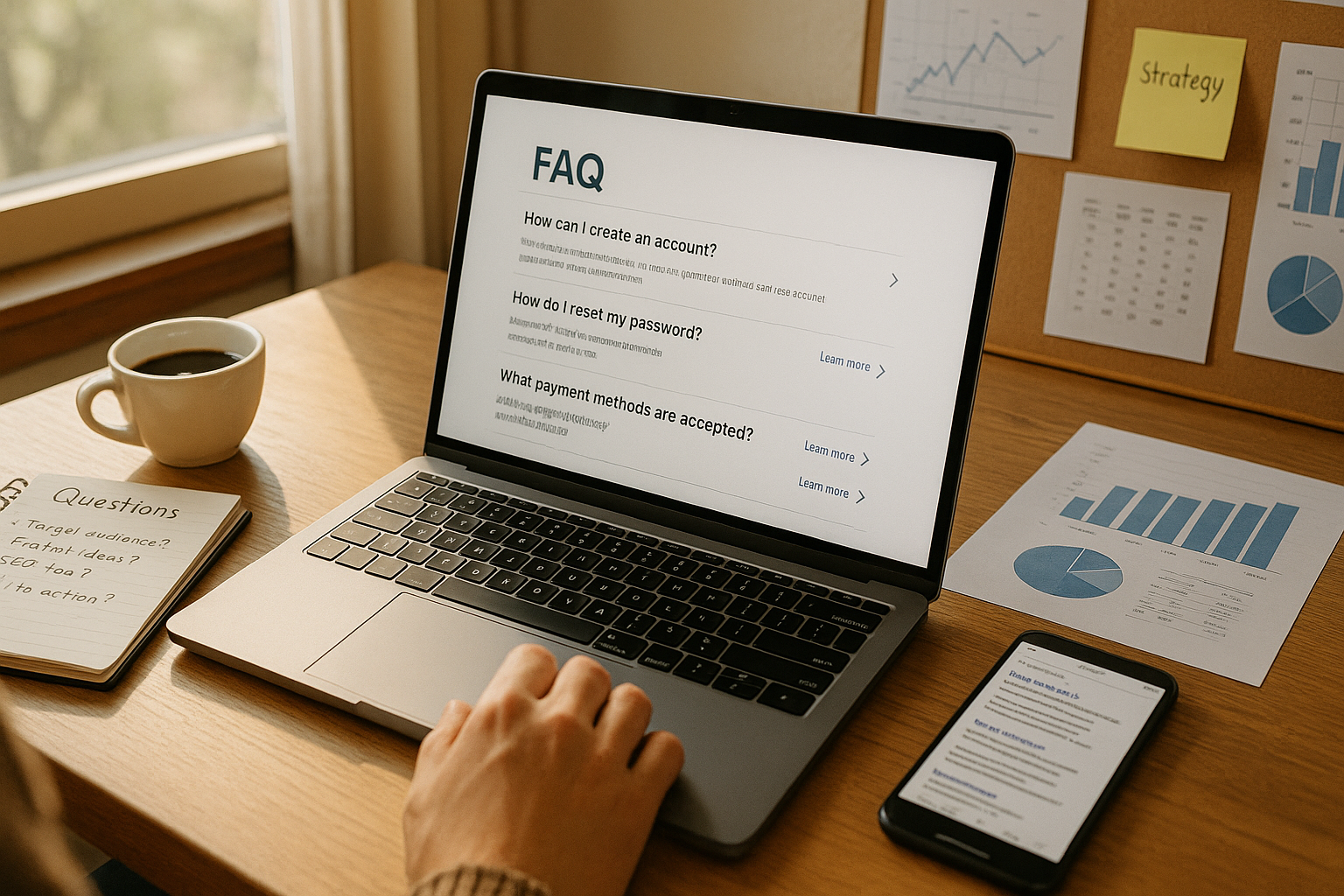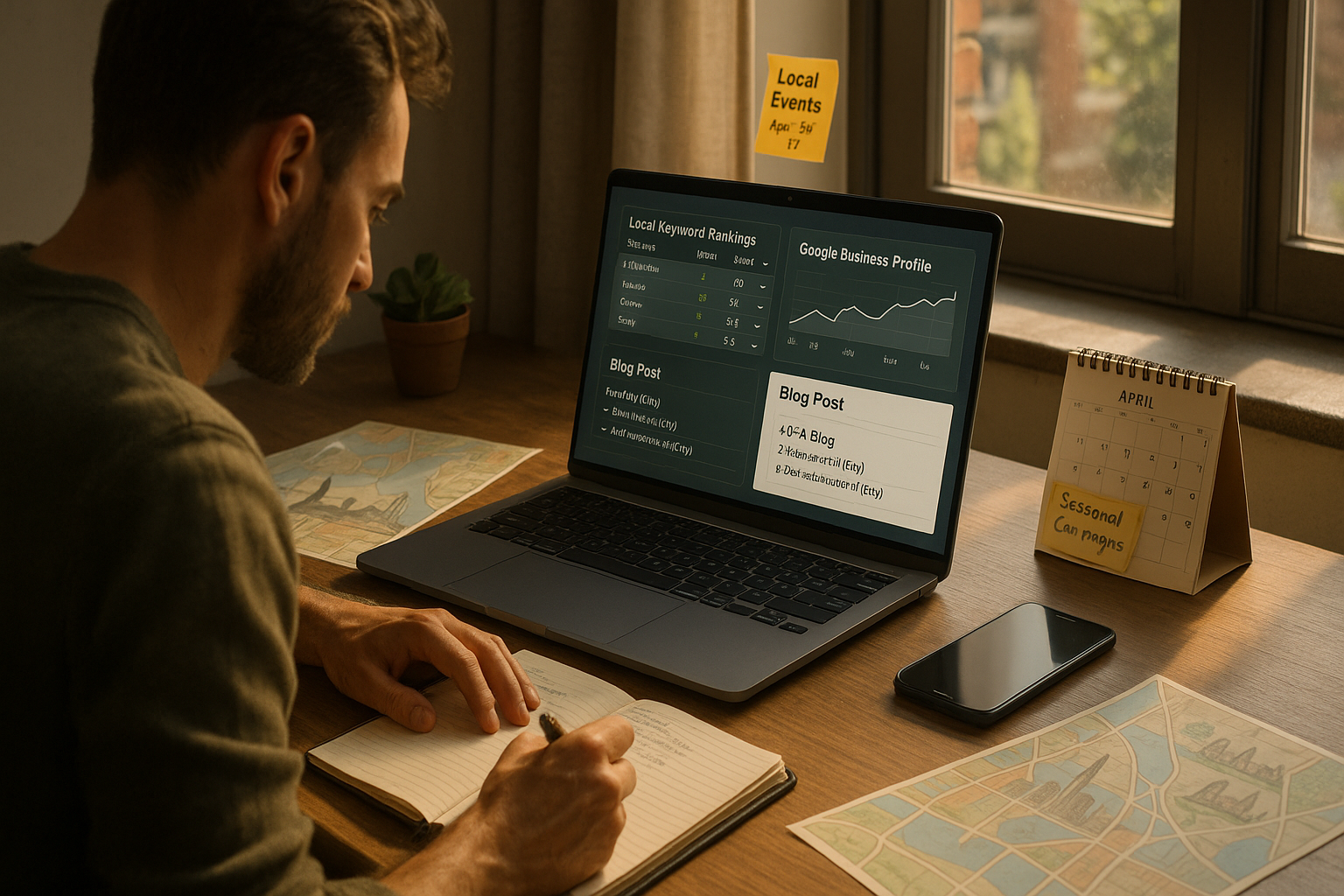What free SEO tools are best for small businesses?
This is a subtitle for your new post
Search engine optimization (SEO) is a crucial component of digital marketing, with the power to transform online visibility, lead generation, and growth for small businesses. For many entrepreneurs, however, the costs and complexity of SEO can be overwhelming. That's why leveraging high-quality free SEO tools is an effective strategy to punch above your weight online. This in-depth guide explores the leading free SEO tools available in 2025, explaining what each is best for and how small businesses can use them to maximize website performance, generate leads, and foster sustainable growth—even when working with tight budgets.
Google Search Console: The Foundation of Free SEO
Google Search Console (GSC) is the essential starting point for any small business serious about building its organic search presence. GSC is a free service provided by Google that allows site owners to monitor, maintain, and troubleshoot their site's presence in Google Search results. With GSC, you can check which queries bring users to your site, analyze your site's impressions, clicks, and position on Google Search, and submit sitemaps for better indexing.
What sets GSC apart is its direct insight into how Google sees your website. For small business owners, this means you can quickly identify and resolve crawl errors, understand which webpages are gaining traction, and ensure that your most important content is being indexed. GSC also notifies you about security issues and mobile usability errors, both of which are vital for maintaining a strong web presence and avoiding traffic losses.
Some key features:
- Performance reports: See what keywords and pages drive traffic.
- Coverage reports: Find and fix indexing errors.
- URL Inspection Tool: See how Googlebot views individual pages.
- Security Issues: Be alerted to hacks or malware.
- Mobile Usability: Ensure a friendly experience for mobile users.
By regularly monitoring Google Search Console, small businesses can make data-driven decisions, promptly fix issues, and better align their sites with how customers find them online.
Google Keyword Planner: Research That Drives Content
Keyword planning is at the heart of SEO strategy, making Google Keyword Planner an indispensable, free asset. Part of Google Ads, Keyword Planner is available to anyone with a Google account and provides valuable information about which search terms people are using, how competitive those terms are, and their estimated search volumes.
For small businesses, the tool’s beauty lies in its ability to reveal exactly what potential customers are typing into Google when seeking products or services like yours. By conducting keyword research, you can discover new content ideas, optimize your website pages, and craft blog posts or landing pages that directly target high-value searches.
Standout features:
- Discover new keywords: Enter products, services, or competitors to get keyword ideas.
- See monthly search volumes and competitive data.
- Filter results based on location, language, and search network.
- Estimate the potential value of spending on paid ads (even if you never run ads).
Keyword Planner’s integration within Google’s ecosystem means the data is both robust and highly relevant. While tailored for paid search campaigns, the qualitative insights on keyword demand and trends are invaluable for organic SEO and content creation, especially for local and niche businesses.
AnswerThePublic: Unlocking User Intent and Content Ideas
One of the biggest content marketing challenges for small businesses is figuring out what questions to answer and what topics to cover. AnswerThePublic addresses this head-on by aggregating and organizing autocomplete search data from Google, Bing, and even social platforms like TikTok and YouTube.
Enter a keyword or short phrase, and AnswerThePublic instantly visualizes a web of questions, comparisons, and related topics, all actual searches made by real users. This is gold for:
- Brainstorming blog post ideas.
- Building comprehensive FAQ pages.
- Understanding customer questions and intent.
- Structuring content to match various stages of the buyer journey.
With a free account, you can run up to three searches a day, enough for monthly content planning. The tool’s unique visualizations make it easy to spot patterns, identify gaps, and inspire strategies for capturing long-tail traffic. For content creation and semantic SEO, AnswerThePublic is one of the most user-friendly tools available—no technical expertise required.
Ahrefs Free SEO Tools: Backlink and Keyword Quick Checks
Ahrefs is renowned for its top-tier paid plans, but its suite of free tools deserves special mention for small businesses. Standouts include:
- Ahrefs Backlink Checker: Analyze the top 100 backlinks for any domain—yours or your competitors’. This provides clarity on your site’s authority-building links and surfaces potential opportunities for outreach.
- Keyword Generator: Find hundreds of keyword suggestions across Google, YouTube, Amazon, and Bing, plus ‘keyword difficulty’ scores to prioritize targets.
- Site Audit Lite: Run technical audits that highlight crawl issues, broken links, and other critical on-page problems on a limited (but useful) scale.
Unlike some “free” SEO tools that offer next to nothing before requiring payment, Ahrefs’ free tier offers actionable data relevant to both starters and experienced marketers. While you get the best performance from a paid subscription, their free toolkit is an excellent way to delve into backlinks and keyword research without risk.
Semrush Free Plan: All-in-One Power for Lean Teams
Semrush is a heavyweight in the SEO world, offering an all-in-one suite for keyword research, competitive analysis, rank tracking, site auditing, and much more. Fortunately, its free plan (after registration) permits up to 10 searches with 10 results each day, enough for many small business use cases.
Key features accessible on the free plan:
- Keyword Magic Tool for keyword research.
- Position Tracking to monitor how your site ranks for chosen keywords.
- Website audit (limited in volume, but valuable for small sites).
With a sleek dashboard and some of the industry’s best educative resources, Semrush can help small businesses cover a wide swath of SEO needs, from tracking competitors to analyzing on-page performance and building a robust backlink strategy. For growth-focused companies that want all-in-one convenience, Semrush represents great value at the free tier—especially for new ventures not ready for a paid commitment.
MozBar: Instant On-Page and SERP Metrics
MozBar is a free Chrome extension that displays critical SEO data as you browse, streamlining research and competitive analysis. By simply toggling MozBar on any search result or website, you can see page authority, domain authority, and the number of backlinks for each page.
Top uses for MozBar include:
- Evaluating the strength of both your own and competitors’ pages.
- Keyword and SERP analysis directly within Google search results.
- Highlighting do-follow and no-follow links as you navigate a page.
- Conducting quick on-page keyword density and optimization scans.
MozBar is a favorite for small business owners and marketers alike due to its ease of use and immediate insights. Unlike many tools that require logging into dashboards, MozBar integrates seamlessly into your workflow for everyday competitive and technical SEO research.
Screaming Frog SEO Spider (Free Version): Technical SEO Made Simple
Technical SEO is often intimidating, but Screaming Frog’s free SEO Spider tool demystifies the process for small business websites (up to 500 URLs per crawl on the free version). It’s a desktop application that “crawls” your site like a search engine, identifying critical technical problems.
Features headlines include:
- Broken link finder (404 errors).
- Analysis of title tags, meta descriptions, header structure, and duplicate content.
- Sitemap generation and validation.
- Redirection (301, 302) mapping.
Screaming Frog’s intuitive interface and exportable reports enable quick fixes and iterative optimization—empowering non-technical users to elevate their sites’ search performance step by step. For any growing business with a website, regularly auditing with Screaming Frog helps ensure your site stays healthy and competitive in Google’s eyes.
BrightLocal and Moz Local: Local SEO Strengtheners
Ranking well for local queries is absolutely essential for restaurants, retailers, service providers, and any business with a physical presence. BrightLocal offers a suite of free and paid tools focused on local SEO, such as citation tracking, review monitoring, and local ranking reports.
Features small businesses will love:
- Local SERP checker (see how you rank in different cities/ZIPs).
- Business listing audits for major directories.
- Local citation finder.
Similarly, Moz Local Listing Score analyzes your business’s presence on Google, Facebook, and dozens of directories. It highlights inconsistencies (like address variations) that hurt rankings and helps ensure your name, address, phone, and other crucial details are accurate everywhere users search.
For local businesses, these tools help establish trust with both users and search engines while targeting “near me” and community-based queries.
Bing Webmaster Tools: Expanding Beyond Google
While Google dominates US search traffic, Bing still accounts for a significant—and growing—share, especially among older and enterprise audiences. Bing Webmaster Tools is free and easy to set up, with functionality that mirrors (and sometimes exceeds) Google Search Console.
Bing’s dashboard includes:
- Comprehensive site audit reports.
- Backlink analysis.
- Keyword research and site performance diagnostics.
- Indexing and crawl control.
By optimizing for Bing, small businesses may discover untapped audiences and additional traffic streams—and with Bing’s integration into Windows devices and Microsoft products, coverage here is a smart diversification move.
Extra Tools Worth Exploring: Ubersuggest, HigherVisibility Tools, and More
While the tools above cover the essentials, there are a number of other specialized resources worth mentioning for small business SEO:
- Ubersuggest: Great for keyword suggestions, site audits, and backlink data.
- Seobility: Free on-page SEO checker with optimization tips.
- Keyworddit and Bulk Keyword Optimizer by HigherVisibility: For uncovering unique keywords from forums and industry sources.
- Google Trends: See spikes and drops in search interest for particular topics over time, perfect for capitalizing on seasonal trends or viral moments.
Each tool brings something unique—whether deeper keyword research, content topic discovery, technical recommendations, or new ways to monitor traffic performance.
Conclusion
Small businesses today have access to a wealth of world-class SEO tools—for free—that level the playing field against larger competitors. From the fundamentals of Google Search Console and Keyword Planner to innovative brainstorming with AnswerThePublic and technical audits via Screaming Frog, the right toolkit empowers business owners to take control of their digital destiny. The most important action is to get started: choose two or three of the tools above, track progress over time, and lean into continuous improvement. As GetPhound’s philosophy suggests, effective growth shouldn’t break the bank—and these free SEO resources ensure any small business can compete, be found, and thrive online.












